
This week, SESS centre leader Christopher Topping participates in the 12th European Congress of Entomology, ECE 2023, in Crete, Greece.
Today at 10:30-11:00 EEST, Christopher Topping will give a keynote speech at Hall 1, Session 15 Integrated Pest Management (IPM):
"The Animal Landcape and Man Simulation System (ALMaSS), a simulation framework for developing IPM"
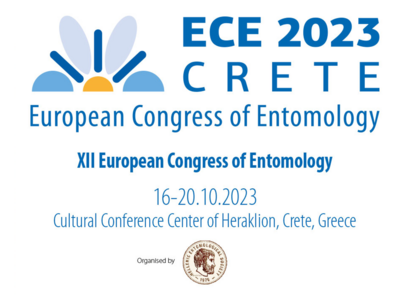

Christopher J. Topping
Department of Ecoscience,
Biodiversity and Conservation,
Aarhus University, DK
In collaboration with our partners in the project Organic+, The Innovation Center for Organic Farming, Thise Dairy, Gram Slot, and Stenalt Gods, the SESS centre organised an exciting workshop at Bovbjerg Fyr the 10th of October.
The purpose of the workshop was to form a basis for dialogue on how we can increase and measure biodiversity in organic farming – nature and agriculture in the same area as a contribution to solving the biodiversity crisis.
Together we discussed how organic agriculture can contribute to the biodiversity in the landscape - which resulted in actions and great ambitions which we are intrigued to follow the development of in the coming time.
The workshop's participants also took part in a field walk at local milk producers from Thise Dairy, who showed examples of initiatives in and around their fields.
Thank you to all of you who participated - for your presence, input, and enormous level of ambition!
Coop Denmark, Danmarks Naturfredningsforening, Aurion, National Ecological Association, ØkologiRådgivning Danmark, the Nature Agency, Vesthimmerland Municipality, Lemvig Municipality and RGS Nordic.
Rread more about the RDD7 project Organic+ here:
https://projects.au.dk/sess/projects/organic (English)
https://icrofs.dk/forskning/dansk-forskning/organic-rdd-7/organic (Danish)
The purpose of Organic+ is to optimise initiatives to promote biodiversity in agricultural land and to measure the effects of biodiversity initiatives.
The project is supported by the Foundation for Organic Agriculture and Organic RDD 7, coordinated by ICROFS - International Center for Research in Organic Food Systems, and with a grant from GUDP - Green Development & Demonstration Program under the Ministry of Food, Agriculture and Fisheries.
Photo by Linda Handrup.
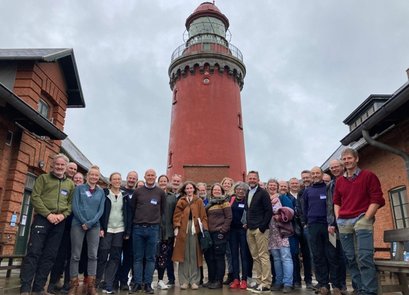

Yoko L. Dupont
Department of Ecoscience,
Biodiversity and Conservation,
Aarhus University, DK

Natasha Mølgaard
Department of Ecoscience,
Biodiversity and Conservation,
Aarhus University, DK

Trine Poulsen
Department of Ecoscience,
Biodiversity and Conservation,
Aarhus University, DK

Astrid Holm Andersen
Department of Ecoscience,
Biodiversity and Conservation,
Aarhus University, DK
We are thrilled to welcome Bjarke to the SESS centre team!
Bjarke has a Bachelor of Engineering from Aarhus University and has completed a DTU Ph.D. course on physically based rendering and material appearance modelling. He has previous experience as a Software Engineer focused on computer graphics, and he has a great interest in rendering and low- level programming.
Bjarke will work with the SESS group to increase the efficiency of the models, debugging and testing them as well as maintaining the ALMaSS code.
Welcome Bjarke, we are happy to have you!
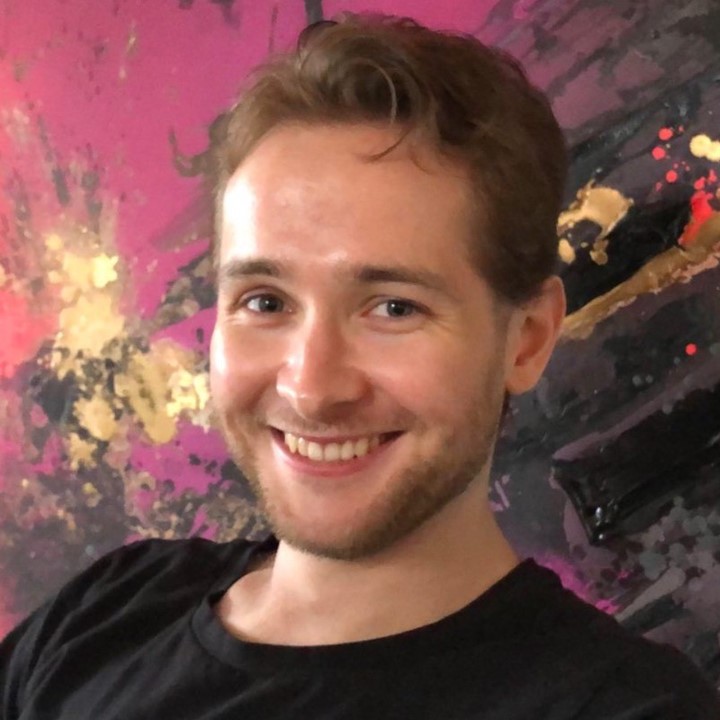
This week, SESS members Trine Poulsen and Jordan Chetcuti participate in the 9th European Conference on Ecological Modelling, ECEM 2023, in Leipzig, Germany.
This year, the ECEM welcomes contributions that directly or indirectly supports tranformation, including strategies and models that focus on improving one or more of the following:
Representation of response mechanisims
Multi-criteria model evaluation
Model-data fusion
Sensitivity and robustness analyses
Upscaling and transferability to new regions
Link to management scenarios
Social-ecological systems
Transparency and reproducibility
Implementation and testing of theories and concepts
Multi-modelling synthesis
The SESS centre is involved in many of these aspects, and will present the following:
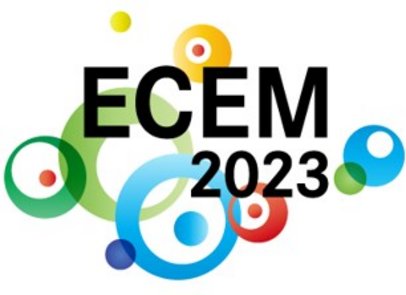

Trine Poulsen
Department of Ecoscience,
Biodiversity and Conservation,
Aarhus University, DK

Jordan Chetcuti
Department of Ecoscience,
Biodiversity and Conservation,
Aarhus University, DK
Authors: European Research Executive Agency (European Commission), Talarico, Tatiana , Brown, Mark J.F , Chauzat, Marie-Pierre , Graaf, Dirk de , Dupont, Yoko L , Kleijn, David , Paxton, Robert J , Potts, Simon G , Schweiger, Oliver , Settele, Josef , Beaurepaire, Alexis , Boustani, Mira , Bulet, Philippe , Castro, Silvia , Smet, Lina de , Knauer, Anina , Michez, Denis , Neumann, Peter , Reverte Saiz, Sara , Rosa, Paolo , Sousa, Jose P , Steffan-Dewenter, Ingolff , Turney, Gail
On 10th of October 2022, REA Unit B.3 “Biodiversity, Circular Economy and Environment” together with the Horizon 2020 project “PoshBee”, organised a workshop of some key EU-funded projects on pollinators (defined as all wild and managed species that contribute to pollination services in the EU). The objective was to promote dialogue, identify R&I needs and gaps, and define common messages and recommendations in order to contribute to bee and pollinator health, sustainable pollination services, and pollinator monitoring. SESS member and Senior researcher Yoko L. Dupont took part in the workshop and coauthored the report.
Read the report here.
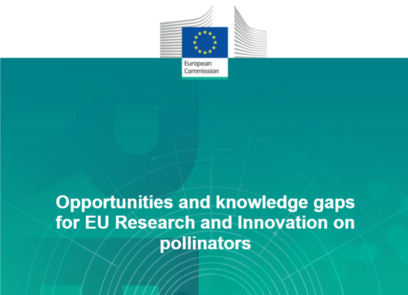

Yoko L. Dupont
Department of Ecoscience,
Biodiversity and Conservation,
Aarhus University, DK
The SESS centre is delighted to participate in a new Horizon Europe project – Better-B.
Better-B is coordinated by Dirk C. de Graaf from Ghent University, and 15 organisations take part in this project about improving resilience of beekeeping to abiotic stresses.
Today, the Better-B kick-off meeting begins in Ghent, Belgium, and several SESS members are there to present and hear about the planned work packages.
SESS leads the creation of a simulation-based decision-support model using the ALMaSS framework, which will be used to identify critical landscape and time-specific points when pollinator forage is limiting, leading to competition both among honey bee colonies and between honey bees and wild bees. In addition, SESS is in charge of establishing a multi actor forum, and co-development processes on national and EU levels.
Read more about the Better-B here.
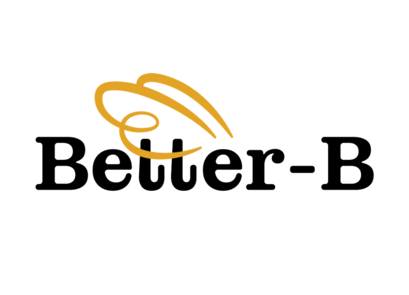

Christopher J. Topping
Department of Ecoscience,
Biodiversity and Conservation,
Aarhus University, DK

James H. Williams
Department of Ecoscience,
Biodiversity and Conservation,
Aarhus University, DK

Yoko L. Dupont
Department of Ecoscience,
Biodiversity and Conservation,
Aarhus University, DK

Xiaodong Duan
Department of Ecoscience,
Biodiversity and Conservation,
Aarhus University, DK

Elżbieta Ziółkowska
Institute of Environmental Sciences,
Jagelloinan University, PL
Authors: Antonio Paparella, Luigi Cembalo, Christopher J. Topping
New Formal Model paper published - The Geo-Social Network Model.
Former SESS centre PhD student Antonio Paparella authored this Formal Model paper about farmer opinion dynamics together with SESS leader Prof. Christopher J. Topping and Prof. Luigi Cembalo from Naples University.
Agri-ecological environment management is a valuable tool for reducing agricultural impacts on ecosystems. Socio-ecological simulations can support agri-ecological environment management to find better solutions for managing natural resources. Here, a Formal Model for reproducing the farmer opinion dynamic in a multi-layer geospatial network is presented, focusing on the influence farmers embedded in the same landscape have on each other.
The model generates a connection between farmers using different criteria and developing a multilayer system where geographical, economic and social aspects are considered. The Geo-Social Network model (GeSoN) shows promising dynamics and types of behaviour, mainly attributable to the formation of consensus, polarisation and fragmentation amongst the agents’ opinions.
Find a link to the paper here.
Below is a figure from the paper: Opinion distribution histogram and network structure. The colour of the dots represents the farmers' initial opinion. On the left side, the initial condition. On the right side, the resulting final condition after 100 time steps.
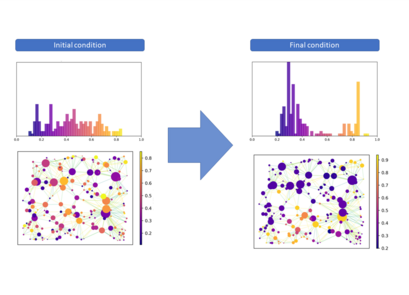

Antonio Paparella
Department of Agricultural Sciences,
University of Naples Federico II, IT

Luigi Cembalo
Department of Agricultural Sciences,
University of Naples Federico II, IT

Christopher J. Topping
Department of Ecoscience,
Biodiversity and Conservation,
Aarhus University, DK
Authors: Elżbieta Ziółkowska, Agnieszka J. Bednarska, Ryszard Laskowski, Christopher J. Topping
The SESS team is delighted to announce that the Formal Model paper on the ALMaSS Osmia model is published with FESMJ. The model aims to simulate osmia population-level dynamics in response to multiple factors at the landscape scale over long periods. This model could be a first step in building future landscape risk assessments for solitary bees.
Find the paper here.
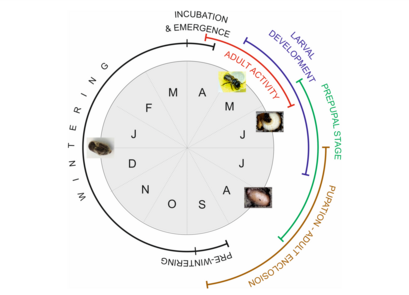

Elżbieta Ziółkowska
Institute of Environmental Sciences,
Jagelloinan University, PL

Agnieszka J. Bednarska
Institute of Nature Conservation,
Polish Academy of Science, PL

Ryszard Laskowski
Institute of Environmental Sciences,
Jagelloinan University, PL

Christopher J. Topping
Department of Ecoscience,
Biodiversity and Conservation,
Aarhus University, DK
BFOOD-DK: Documentation of flower resource availability and optimization of location and density of honey bee hives in Denmark
Project partners: Aarhus University & Jagiellonian University
The SESS team received funding for a new project about honey bees.
The BFOOD-DK project is led by SESS member and Senior Researcher Yoko L. Dupont, and aims to enhance the understanding of floral resource use by honey bees in Danish landscapes, and to investigate options for optimizing the availability of resources (pollen and nectar) through the location and density of bee colonies.
BFOOD-DK is financially supported by the National Beekeeping funding programme (The Danish Agricultural Agency and EU).
Read more about this project on our SESS project subpage BFOOD-DK that will be updated continuously with project activities.
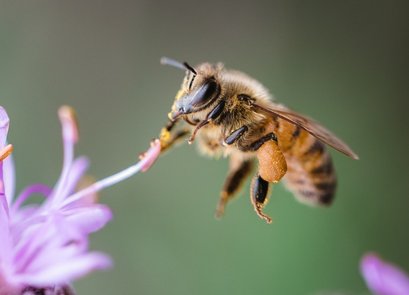

Yoko L. Dupont
Department of Ecoscience,
Biodiversity and Conservation,
Aarhus University, DK

Christopher J. Topping
Department of Ecoscience,
Biodiversity and Conservation,
Aarhus University, DK

Xiaodong Duan
Department of Ecoscience,
Biodiversity and Conservation,
Aarhus University, DK

Elżbieta Ziółkowska
Institute of Environmental Sciences,
Jagelloinan University, PL

Luna K. Marcussen
Department of Ecoscience,
Biodiversity and Conservation,
Aarhus University, DK
Authors: Marie Van Espen, James H. Williams, Fátima Alves, Yung Hung, Dirk C. de Graaf, Wim Verbeke
The beekeeping sector is suffering from the detrimental effects of climate change, both directly and indirectly.
SESS member and Researcher James H. Williams and H2020 B-GOOD partners co-authored this large-scale research study incorporating stakeholders' and beekeepers' perspectives. This was done by assessing the extent to which stakeholders involved in the European beekeeping sector and European beekeepers perceive and experience the impacts of climate change on their operations, and whether they had to adapt their practices accordingly. A mixed-methods study including in-depth stakeholder interviews and a pan-European beekeeper survey was completed within the frame of the EU-funded H2020-project B-GOOD.
Analysis indicates that Southern European beekeepers experienced a 10-fold likelihood of being classified as heavily impacted by climate change compared to Northern European beekeepers.
Read the paper here.
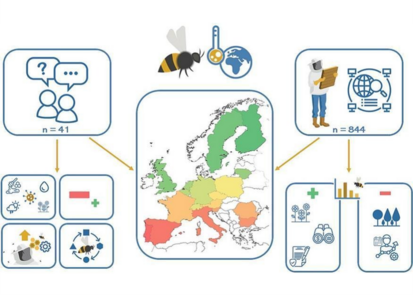

James H. Williams
Department of Ecoscience,
Biodiversity and Conservation,
Aarhus University, DK
SESS member and Senior Researcher Yoko Dupont presents (in Danish) her booklet "Bier" (eng: "Bees") Tuesday evening the 2nd of May at Risskov Library, Aarhus, DK.
Read about the event organised by Aarhus Bibliotekerne, and book a ticket here.
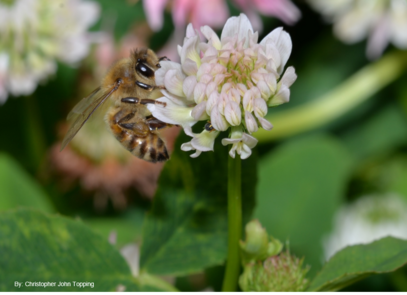

Yoko L. Dupont
Department of Ecoscience,
Biodiversity and Conservation,
Aarhus University, DK
We are looking for a Tenure-Track Researcher experienced in aspects of applied social-ecological systems simulation science.
The position has a guaranteed option to be evaluated for a permanent senior researcher position after four years.
The SESS team offers a vibrant and informal research environment with longstanding traditions for collaboration with elite international university partners, environmental protection agencies and authorities.
English is widely spoken and the working language in SESS, and we welcome applicants from abroad.
We value a working environment based on teamwork and close working relations. As a multidisciplinary team with numerous ongoing projects, we benefit from our day-to-day collaboration, where we often contribute to various overlapping projects. We provide each other with a broad range of insights and inputs that strengthen the development and outcome of our research. Our work is more adapted to our strengths and how we work individually than the other way around. As a team, we are inclusive and there is a general focus and understanding for the balance between work and private life – and how that balance can look different depending on each person.
Read more about the job here.
Apply for the position now here.
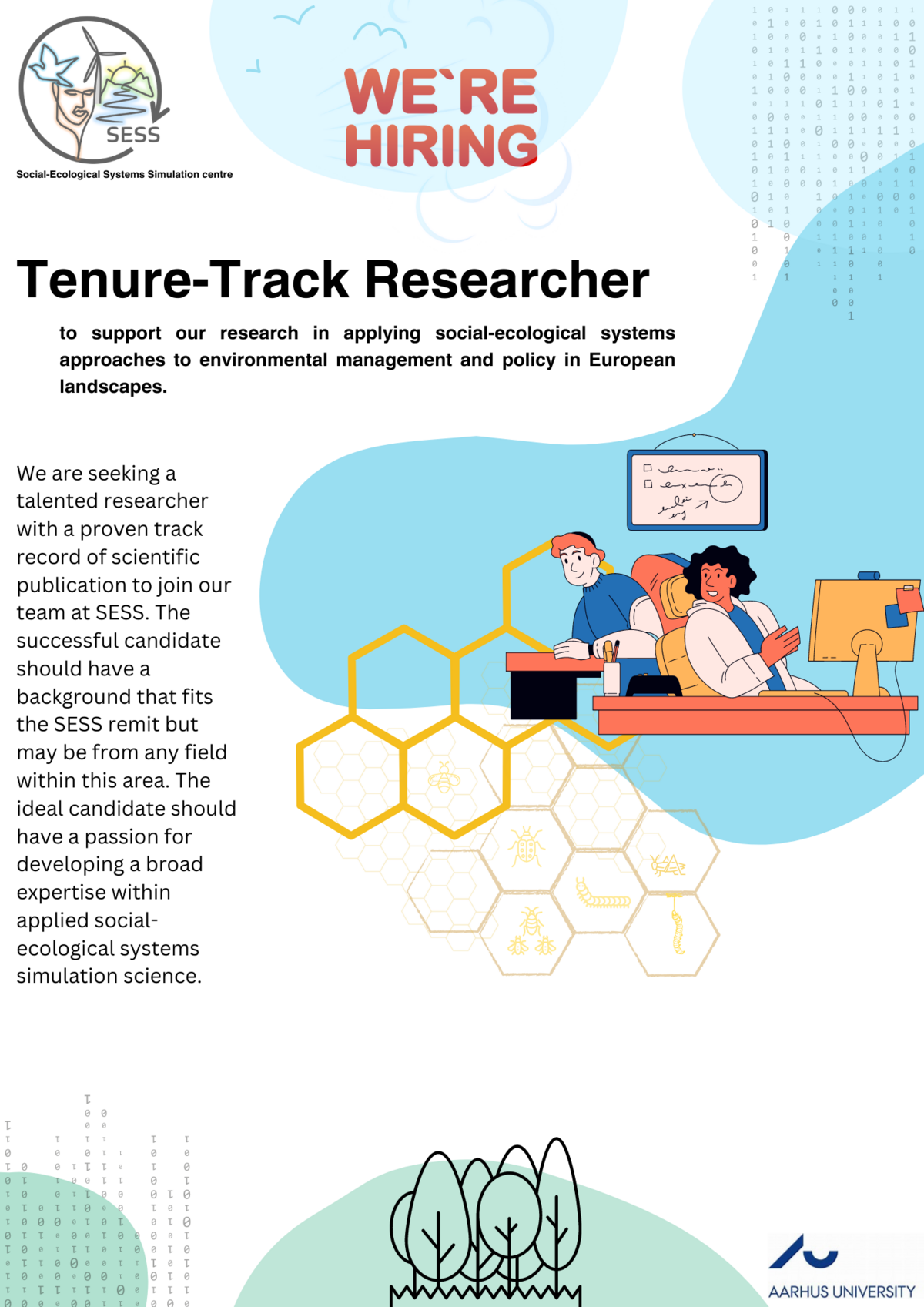
SESS member Yoko L. Dupont coauthored an article (in Danish) related to the Organic+ project about biodiversity and the land sharing concept.
The Organic+ project aims to develop a tool to improve biodiversity in organic agriculture.
Find the article here (in Danish).
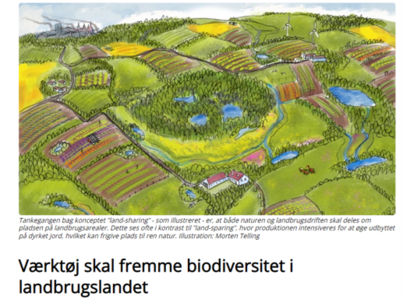

Yoko L. Dupont
Department of Ecoscience,
Biodiversity and Conservation,
Aarhus University, DK
We are expanding our team with an Experienced Programmer for simulation modelling.
The main task will be to develop algorithms, models, and data management tools to support the ongoing development of simulation models as part of the Animal Landscape and Man Simulation System - ALMaSS.
The SESS team offers a vibrant and informal research environment with longstanding traditions for collaboration with elite international university partners, environmental protection agencies and authorities.
English is widely spoken and the working language in SESS, and we welcome applicants from abroad.
We value a working environment based on teamwork and close working relations. As a multidisciplinary team with numerous ongoing projects, we benefit from our day-to-day collaboration, where we often contribute to various overlapping projects. We provide each other with a broad range of insights and inputs that strengthen the development and outcome of our research. Our work is more adapted to our strengths and how we work individually than the other way around. As a team, we are inclusive and there is a general focus and understanding for the balance between work and private life – and how that balance can look different depending on each person.
Read more about the job here.
Apply for the position now here.
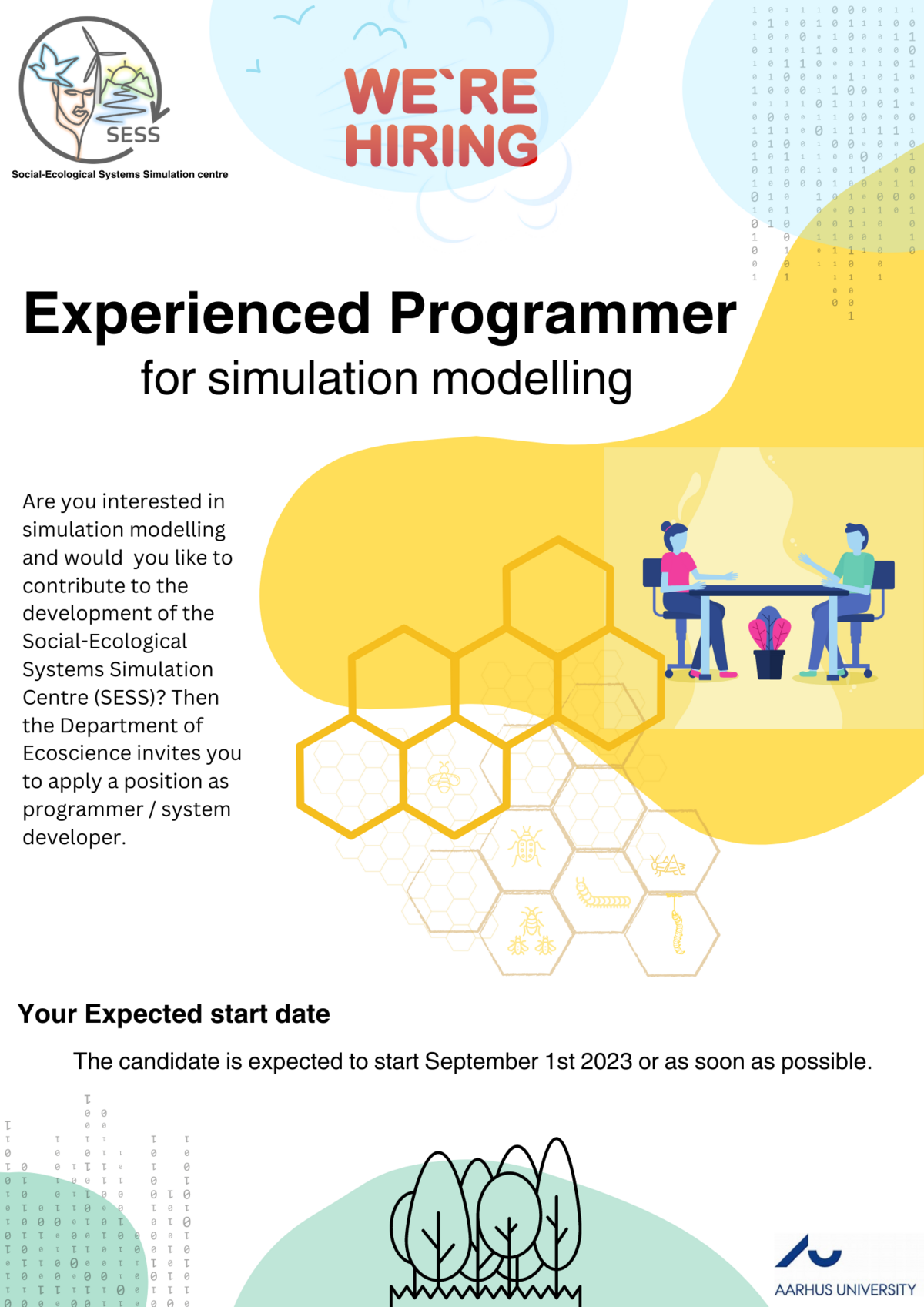
We are excited to announce that Sara Nafisi joined our team as an intern.
Sara has an M.Sc. in Technology (Architecture) from Aalborg University, and is an experienced architect and researcher with focus on ecological, digital, and innovative thinking. She is engaged in technical disciplines of architecture and landscape.
Sara will assist us with our work on formal models as well as the digital appearance and content creations for SESS.
We are happy to have you on the SESS team, Sara!
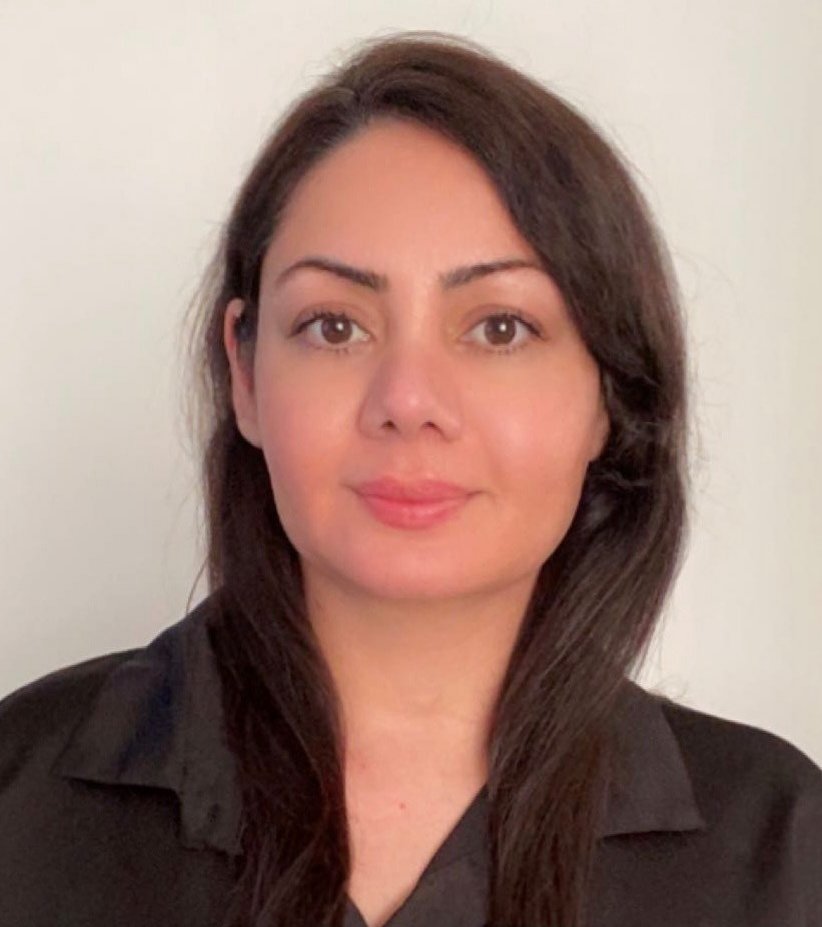
This weekend, Senior Researcher Yoko L. Dupont attended the Danish Beekeepers Association Conference. She presented work from two of our projects involving honey bees and incorporating citizen science; The Honey bee pollen project and MUSBERA.
You can find more details about the conference here (in Danish).
View the presentation slides here (in Danish).
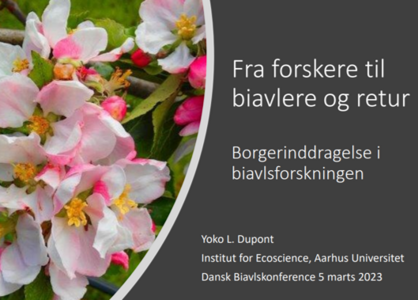

Yoko L. Dupont
Department of Ecoscience,
Biodiversity and Conservation,
Aarhus University, DK
SESS leader Chris Topping contributed to the new European Academies Science Advisory Council (EASAC) report: Neonicotinoids and their substitutes in sustainable pest control.
The report strengthens earlier conclusions in EASAC’s 2015 review on ecosystem effects of neonicotinoids with a summary of the results of research in recent years. The report supports the continuation of existing restrictions and of measures to minimise future use with a particular focus to mitigate the threat to future food security from the continued decline in insects (including pollinators).
Find the report here.
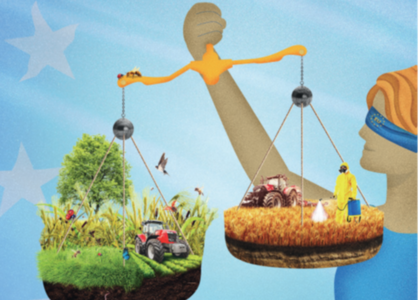

Christopher J. Topping
Department of Ecoscience,
Biodiversity and Conservation,
Aarhus University, DK
SESS members Elżbieta Ziółkowska and Chris Topping coauthored this publication that assesses the effectiveness of selected mitigation measures on non-target terrestrial arthropods using a common carabid beetle Bembidion lampros as a model species.
Is the effectiveness of policy-driven mitigation measures on carabid populations driven by landscape and farmland heterogeneity? Applying a modelling approach in the Dutch agroecosystems
Authors: E. Ziółkowska, A. Tiktak and C. J. Topping
The growing challenges of protecting biodiversity in agro-ecosystems and maintaining high agricultural productivity has become an important issue within the European Union, shaping both European and national agro-policies. The presented study is part of a broader evaluation of the interim targets of the 2013 Dutch policy plan on sustainable use of pesticides, carried out in 2019 by the PBL (Planbureau voor de Leefomgeving) Netherlands Environmental Assessment Agency. We aimed to assess the effectiveness of selected mitigation measures suggested in the policy plan on non-target terrestrial arthropods using a common carabid beetle Bembidion lampros as a model species. We combined dynamic landscape models with detailed agent-based population modelling to simulate impacts of reduction of toxicity of insecticides, reduction of spray drift to the off-crop area, and increase in area of field margins on the beetle population dynamics in ten agricultural landscapes representing different farming systems. Our simulations showed that a shift towards low-risk products should be the priority if the goal is to increase beetle range. To promote local beetle abundance this needs be coupled with increasing amount of field margins in a landscape. Overall, the observed treatment and landscape effects were highly context-specific and therefore we suggest that care is used when defining and interpretting metrics based on population effects of policy measures. This caveat notwithstanding, the use of simulation to assess complex interactions between landscape, ecology and behaviour of species, and policy measures can be a powerful tool supporting innovative policy management. This should include the development of landscape-context specific targets and/or mitigation measures.
Find the publication here.

Elżbieta Ziółkowska
Institute of Environmental Sciences,
Jagelloinan University, PL

Christopher J. Topping
Department of Ecoscience,
Biodiversity and Conservation,
Aarhus University, DK
Senior Researcher Yoko L. Dupont coauthored a DCE (Danish Centre for Environment and Energy) report about the pollen supply of honey bees in Danish landscapes throughout the year.
Honningbiers pollenforsyning i danske landskaber (eng: Honey bee pollen supply in Danish landscapes)
Authors: Y. L. Dupont, M. B. Greve and P. Kryger
The report describes the work and results of the Honey bee pollen project where researchers studied the honey bee pollen supply to investigate the significance of the seasonal flowers and land use of the surrounding area.
As a part of this study, Danish beekeepers from different regions and landscape types of Denmark volunteered to provide pollen samples. In total 105 different pollen types were identified in the samples, which made it possible for the researchers to determine which pollen types the bees collected at certain landscape types and times during the season. Results show that the dominating pollen types are Salicaceae (willow) for early spring, Brassicaceae (oilseed rape) in May, Fabacae (white clover) in summer, and Araliaceae (common ivy) and Brassicaceae (white mustard) in autumn. The diversity of pollen increased from spring until August and afterwards decreased in autumn. The highest biodiversity occured in city areas, and to a lesser extent in areas where bees were limited to certain areas, e.g., islands.
The photo shows pollen gathered by two bees and stored in their pollen baskets. Bees usually gather pollen from one plant species at a time, thus the pollen colour relates to the plant species. The orange pollen is possibly from Taraxacum (dandelion), and the yellow pollen is likely to be Brassica napus (oilseed rape).
Read the report here (in Danish).
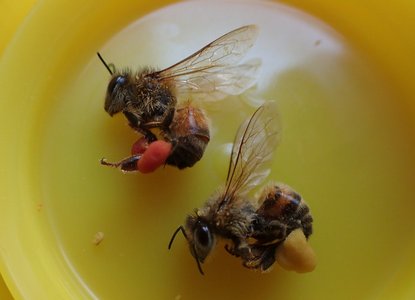

Yoko L. Dupont
Department of Ecoscience,
Biodiversity and Conservation,
Aarhus University, DK
Project lead: SESS (Aarhus University)
This 23 months project funded by EFSA has officially started with the project kick-off meeting Tuesday the 6th of December.
We are thrilled to expand the capability of ApisRAM towards its use for regulatory purposes. The first stage of new development builds on existing modules to add greater functionality for pesticide and biological agent simulation.
The core team working on this project is Christopher J. Topping, Xiaodong Duan, Trine Poulsen, and Jamie Alison.

Christopher J. Topping
Department of Ecoscience,
Biodiversity and Conservation,
Aarhus University, DK

Xiaodong Duan
Department of Ecoscience,
Biodiversity and Conservation,
Aarhus University, DK

Trine Poulsen
Department of Ecoscience,
Biodiversity and Conservation,
Aarhus University, DK

Jamie Alison
Department of Ecoscience,
Biodiversity and Conservation,
Aarhus University, DK
SESS member and Senior Researcher Yoko L. Dupont coauthored this publication about the neutral processes that contribute to the spatial variation in plant-pollinator interactions.
Neutral processes related to regional bee commonness and dispersal distances are important predictors of plant–pollinator networks along gradients of climate and landscape conditions
Authors: M. A. K. Sydenham, Z. S. Venter, S. R. Moe, K. Eldegard, M. Kuhlmann, T. Reitan, C. Rasmussen, R. Paxton, Y. L. Dupont, A. B. Skrindo, S. J. Hegland, A. Nielsen, J. M. Olesen, M. Nowell, G. M. Rusch
Understanding how niche-based and neutral processes contribute to the spatial variation in plant–pollinator interactions is central to designing effective pollination conservation schemes. Such schemes are needed to reverse declines of wild bees and other pollinating insects, and to promote pollination services to wild and cultivated plants. We used data on wild bee interactions with plants belonging to the four tribes Loteae, Trifolieae, Anthemideae and either spring- or summer-flowering Cichorieae, sampled systematically along a 682 km latitudinal gradient to build models that allowed us to 1) predict occurrences of pairwise bee–flower interactions across 115 sampling locations, and 2) estimate the contribution of variables hypothesized to be related to niche-based assembly structuring processes (viz. annual mean temperature, landscape diversity, bee sociality, bee phenology and flower preferences of bees) and neutral processes (viz. regional commonness and dispersal distance to conspecifics). While neutral processes were important predictors of plant–pollinator distributions, niche-based processes were reflected in the contrasting distributions of solitary bee and bumble bees along the temperature gradient, and in the influence of bee flower preferences on the distribution of bee species across plant types. In particular, bee flower preferences separated bees into three main groups, albeit with some overlap: visitors to spring-flowering Cichorieae; visitors to Anthemideae and summer-flowering Cichorieae; and visitors to Trifolieae and Loteae. Our findings suggest that both neutral and niche-based processes are significant contributors to the spatial distribution of plant–pollinator interactions so that conservation actions in our region should be directed towards areas: near high concentrations of known occurrences of regionally rare bees; in mild climatic conditions; and that are surrounded by heterogenous landscapes. Given the observed niche-based differences, the proportion of functionally distinct plants in flower-mixes could be chosen to target bee species, or guilds, of conservation concern.
Find the publication here.

Yoko L. Dupont
Department of Ecoscience,
Biodiversity and Conservation,
Aarhus University, DK
The SESS centre leads the Organic+ project and collaborates with Innovation Center for Organic Farming (ICOEL) and Thise Dairy, among others. In this project we focus on initiatives to enhance sustainable biodiversity in organic agriculture.
During the past months, Thise Dairy, with input and participation from SESS and ICOEL, has held a number of Bio Schools with interested Thise cooperative members. The aim here is to focus on initiatives that can strengthen biodiversity.
At cooperative owner Bjarne Jensen's farm, the Bio School participants experienced an interesting example of the potentials when nature is allowed to stay and flourish.
Read more about Bjarne's story here (Danish).

Leader of the SESS centre and member of the EFSA Plant Protection Products and Residues (PPR) Panel Chris Topping coauthored a Scientific Opinion on toxicity of pyrethroid common metabolites.
This Scientific Opinion demonstrates that pyrethroid toxicity is complicated to determine due to breakdown products.
Scientific opinion on toxicity of pyrethroid common metabolites
Authors: EFSA Panel on Plant Protection Products and their Residues (PPR), Antonio F Hernandez-Jerez, Paulien Adriaanse, Annette Aldrich, Philippe Berny, Sabine Duquesne, Andreas Focks, Marina Marinovich, Maurice Millet, Olavi Pelkonen, Silvia Pieper, Aaldrik Tiktak, Christopher J Topping, Anneli Widenfalk, Martin Wilks, Gerrit Wolterink, Marco Binaglia, Arianna Chiusolo, Rositsa Serafimova, Andrea Terron and Tamara Coja
The EFSA Panel on Plant Protection Products and their Residues was requested by the European Commission, to conclude based upon available evidence if metabolites 3-phenoxybenzoic acid (PBA) and 3-(40-hydroxyphenoxy)benzoic acid (PBA(OH)), common to several pyrethroid compounds, have genotoxic properties, if they share the (neuro)toxicity profile of their parent compounds, and if evidence allows to conclude on their health-based guidance values. Available body of evidence consisted of studies from regulatory dossiers submissions, as well as from public literature. In addition, the data gap for short-term toxicity profile of PBA was addressed by read-across. Assessment revealed that PBA and PBA(OH) do not raise a concern with respect to genotoxicity. As regards general toxicity, PBA and PBA(OH) have different qualitative (no neurotoxic mechanism) and quantitative (higher NOAELs) toxicity compared to the parent pyrethroid compounds. For both metabolites, acceptable daily intake (ADI) and acute reference dose (ARfD) values were derived at 0.1 mg/kg body weight (bw) per day and 1 mg/kg bw, respectively.
Find the publication here.

Christopher J. Topping
Department of Ecoscience,
Biodiversity and Conservation,
Aarhus University, DK
We are thrilled to announce that Trine Poulsen joined our team today.
Trine has a PhD in particle physics from Lund University, and has previously worked on the ATLAS Experiment as a PostDoc at DESY, Hamburg. She has a strong interest in the climate and biodiversity crisis, especially the impact our current food system has on both.
Trine will work with us as a PostDoc where she will contribute to our tasks in the B-GOOD project in collaboration with Xiaodong.
We are delighted to have you Trine, welcome to SESS!
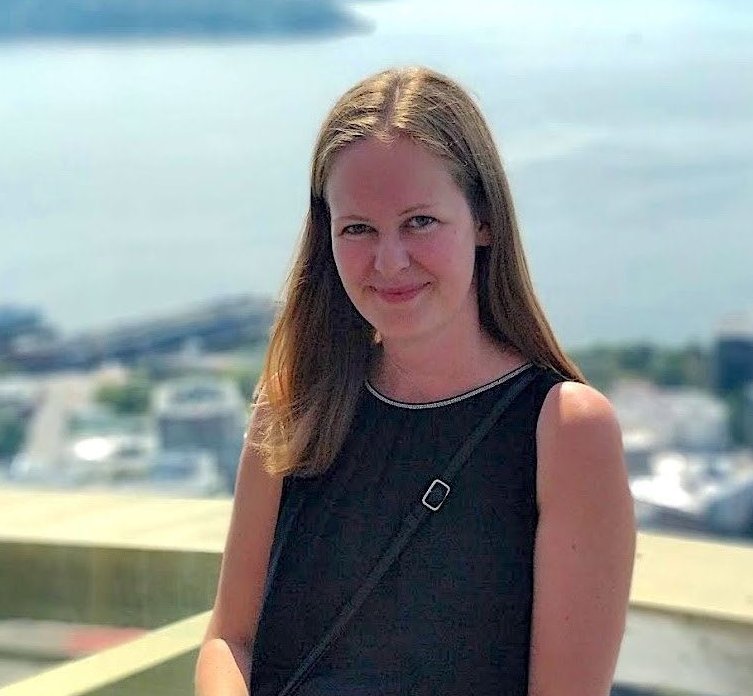
We are happy to have Jamie Alison on board to assist us at the SESS center part-time. Jamie is a familiar face to our team as he is PostDoc at the Biodiversity Section, Department of Ecoscience.
Jamie is a quantitative ecologist specialised in spatial analysis and computer vision. His job is to rapidly extract ecological information from national databases and autonomous cameras. This ecological information helps us to predict wildlife responses to changes in climate and human management.
Welcome Jamie, we are pleased to work with you!
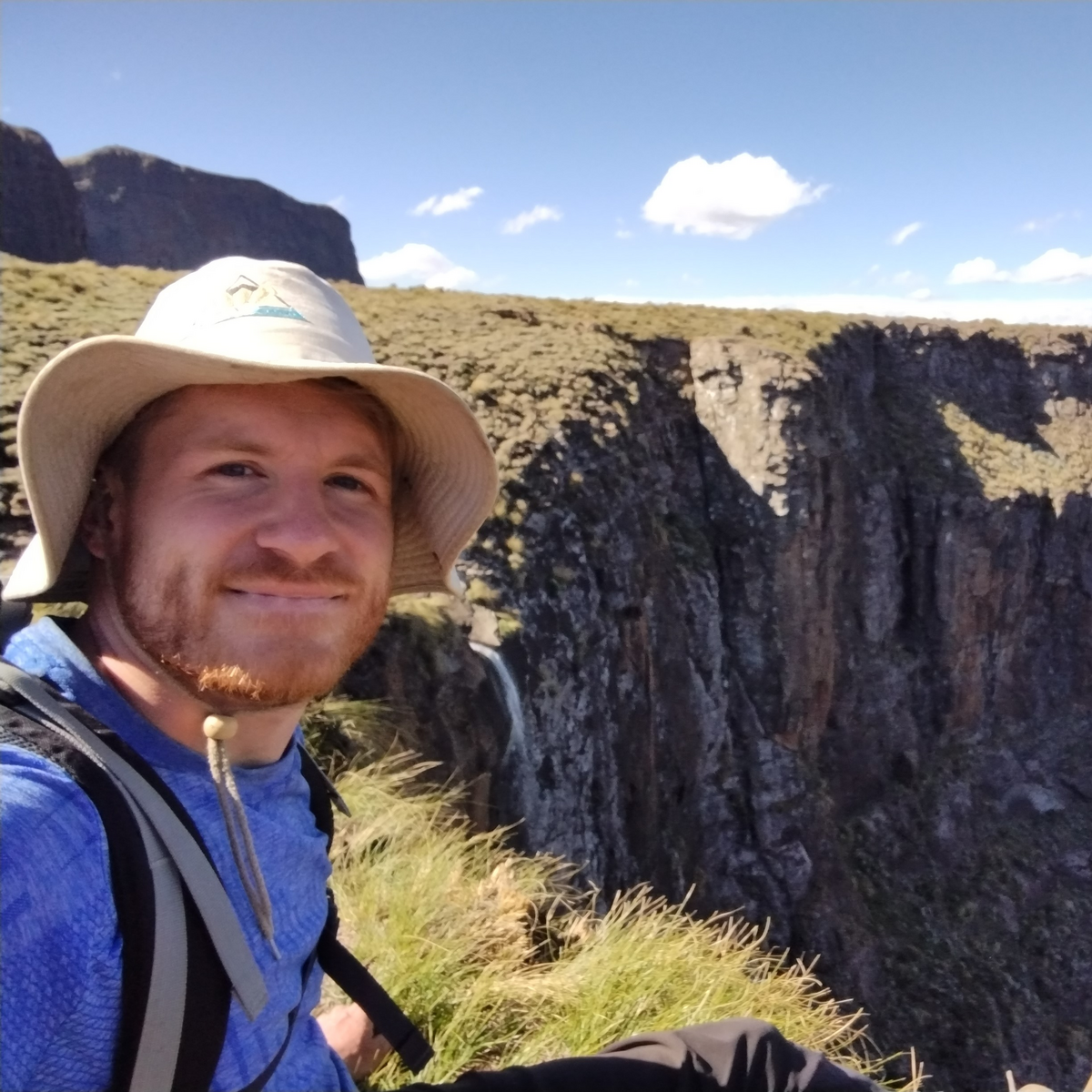
The SESS team is delighted to announce that our paper on The Formal Model is published with FESMJ. This paper presents an innovative approach for documenting and justifying complex models as well as receiving feedback.
The Formal Model article format: justifying modelling intent and a critical review of data foundations through publication
Authors: Christopher John Topping, Luna Kondrup Marcussen, Peet Thomsen, Jordan Chetcuti
Find the article here, and watch an overview of The Formal Model below:


Christopher J. Topping
Department of Ecoscience,
Biodiversity and Conservation,
Aarhus University, DK

Luna K. Marcussen
Department of Ecoscience,
Biodiversity and Conservation,
Aarhus University, DK

Peet Thomsen
Department of Ecoscience,
Biodiversity and Conservation,
Aarhus University, DK

Jordan Chetcuti
Department of Ecoscience,
Biodiversity and Conservation,
Aarhus University, DK
SESS centre leader Chris Topping coauthored this intriguing Nature Communications article about bees and the bees' responses to pesticides. The article provides a method that helps us deal with the complexity of the bee-environment-pesticide system where simple answers and rules of thumb are difficult to find.
In addition, the article finds that empirical studies can be misleading since almost the same conditions of bee-pesticide exposure can result in completely opposite outcomes. The viral load of the bees is critical because it results in a feedback loop affecting the bees' ability to deal with further stressors.
A deeper understanding of system interactions can explain contradictory field results on pesticide impact on honey bees
Authors: Dimitri Breda, Davide Frizzera,Giulia Giordano, Elisa Seffin,Virginia Zanni, Desiderato Annoscia, Christopher J. Topping, Franco Blanchini & Francesco Nazzi
While there is widespread concern regarding the impact of pesticides on honey bees, well-replicated field experiments, to date, have failed to provide clear insights on pesticide effects. Here, we adopt a systems biology approach to gain insights into the web of interactions amongst the factors influencing honey bee health. We put the focus on the properties of the system that depend upon its architecture and not on the strength, often unknown, of each single interaction. Then we test in vivo, on caged honey bees, the predictions derived from this modelling analysis. We show that the impact of toxic compounds on honey bee health can be shaped by the concurrent stressors affecting bees. We demonstrate that the immune-suppressive capacity of the widespread pathogen of bees, deformed wing virus, can introduce a critical positive feed-back loop in the system causing bistability, i.e., two stable equilibria. Therefore, honey bees under similar initial conditions can experience different consequences when exposed to the same stressor, including prolonged survival or premature death. The latter can generate an increased vulnerability of the hive to dwindling and collapse. Our conclusions reconcile contrasting field-testing outcomes and have important implications for the application of field studies to complex systems.
Find the article here.

Christopher J. Topping
Department of Ecoscience,
Biodiversity and Conservation,
Aarhus University, DK
Project partners: SESS (Aarhus University), Coimbra University, Lund University, Polish Academy of Sciences, University of Bologna, Polytechnic Institute of Bragança & BeeLife
This 10 months desk research project, funded by EFSA, officially kicked off last week, and we are excited to lead IPol-ERA, and work together with a strong team of experts concerning pollinators, environmental risk assessment, and social science. The IPol-ERA team comprises 24 participants from 7 partners located in 6 different countries; Denmark, Portugal, Sweden, Poland, Italy and Belgium.
IPol-ERA develops a roadmap for action that identifies recent relevant research and risk assessment developments that might need consideration when conducting ERAs of chemical pesticides for insect pollinators. The IPol-ERA roadmap will also identify relevant ERA development needs for insect pollinators that require additional research input relevant for consolidating, updating and harmonising methodologies for the ERA of chemical pesticides for insect pollinators, and for developing and implementing a systems-based approach for the ERA for insect pollinators.

Christopher J. Topping
Department of Ecoscience,
Biodiversity and Conservation,
Aarhus University, DK

James H. Williams
Department of Ecoscience,
Biodiversity and Conservation,
Aarhus University, DK

Yoko L. Dupont
Department of Ecoscience,
Biodiversity and Conservation,
Aarhus University, DK

Peet Thomsen
Department of Ecoscience,
Biodiversity and Conservation,
Aarhus University, DK

Natasha Mølgaard
Department of Ecoscience,
Biodiversity and Conservation,
Aarhus University, DK

Luna K. Marcussen
Department of Ecoscience,
Biodiversity and Conservation,
Aarhus University, DK

Paulo Sousa
Department of Life Sciences,
The Centre for Functional Ecology,
Coimbra University, PT

Nuno Capela
Department of Life Sciences,
The Centre for Functional Ecology,
Coimbra University, PT

Agnieszka J. Bednarska
Institute of Nature Conservation,
Polish Academy of Science, PL
The SESS team together with project partner Innovation Centre for Organic Farming (ICØL) participated in Stenalt Autumn Market with an Organic+ information booth for the audience to visit. The market was well visited by 1000-1500 visitors.
At the Organic+ booth visitors could hear more about the Organic+ project, and Bent Rasmussen (ICØL) led two biodiversity field walks talking about and looking at farming actions to improve biodiversity. Senior Researcher and Project leader Yoko L. Dupont gave a presentation on biodiversity in the field, beneficial species, and Organic+.
We would like to thank visitors for their interest in Organic+, and thank you to Stenalt Skov- og Landbrug for having us at the market!

We are happy to announce that we have a new research assistant joining the SESS team. Natasha Mølgaard had her first day the 1st of September, and she is now learning about our work and SESS involved projects.
Natasha has a BSc in Anthropology and MSc in Human Security from Aarhus University. She will be conducting interviews and participant workshops, and will assist the SESS team in developing the social science side of the centre. She is mainly involved in our Organic+ project, collaborating with James.
Welcome aboard Natasha, we are happy to have you!
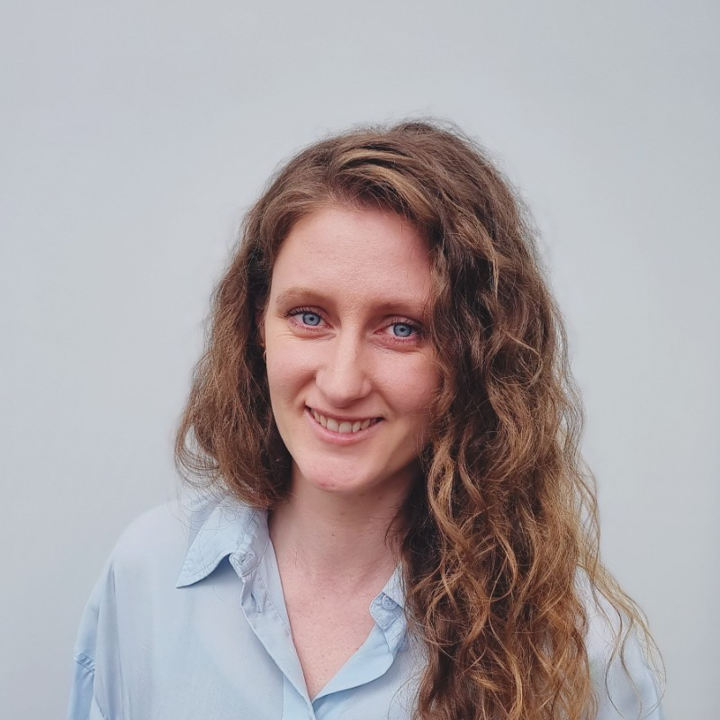
Nuno Capela , Yoko L. Dupont , Agnès Rortais , Artur Sarmento, Alexandra Papanikolaou , Christopher J. Topping , Gérard Arnold , M. Alice Pinto , Pedro J. Rodrigues , Simon J. More , Simone Tosi , Thiago S. Alves , José Paulo Sousa
Honey bees are key insect pollinators, providing important economic and ecological value for human beings and ecosystems. This has triggered the development of several monitoring methods for assessing the temporal development of colony size, food storage, brood and pathogens. Nonetheless, most of these methods are based on visual assessments that are observer-dependent and prone to bias. Furthermore, the impact on colony development (invasiveness), as well as accuracy, were rarely considered when implementing new methods. In this study, we present and test a novel accurate and observer-independent method for honey bee colony assessment, capable of being fully standardized. Honey bee colony size is quantified by assessing the weight of adult bees, while brood and provision are assessed by taking photos and conducting image analysis of the combs with the image analysis software Deepbee®. The invasiveness and accuracy of the method were investigated using field data from two experimental apiaries in Portugal, comparing results from test and control colonies. At the end of each field experiment, most of the tested colonies had the same colony size, brood levels and honey production as the control colonies. Nonetheless, continuous weight data indicated some disturbance in tested colonies in the first year of monitoring. The overall accuracy of the image analysis software was improved by training, indicating that it is possible to adapt the software to local conditions. We conclude that the use of this fully quantitative method offers a more accurate alternative to classic visual colony assessments, with negligible impact on colony development.
Find the article here.

Nuno Capela
Department of Life Sciences,
The Centre for Functional Ecology,
Coimbra University, PT

Yoko L. Dupont
Department of Ecoscience,
Biodiversity and Conservation,
Aarhus University, DK

Christopher J. Topping
Department of Ecoscience,
Biodiversity and Conservation,
Aarhus University, DK

Paulo Sousa
Department of Life Sciences,
The Centre for Functional Ecology,
Coimbra University, PT
We welcome our newest addition to the SESS Danish core team, Astrid Holm Andersen, who has joined us as a research assistant.
Astrid has a MSc in Biology from Aarhus University, and will assist the SESS team by creating an overview of our modelling developments as well as running simulation scenarios for our projects.
Astrid joined our team Friday, and she is now learning about our different models and how to run them in ALMaSS.
Welcome to the SESS team Astrid, your work is essential to our team, and we are excited to work with you!
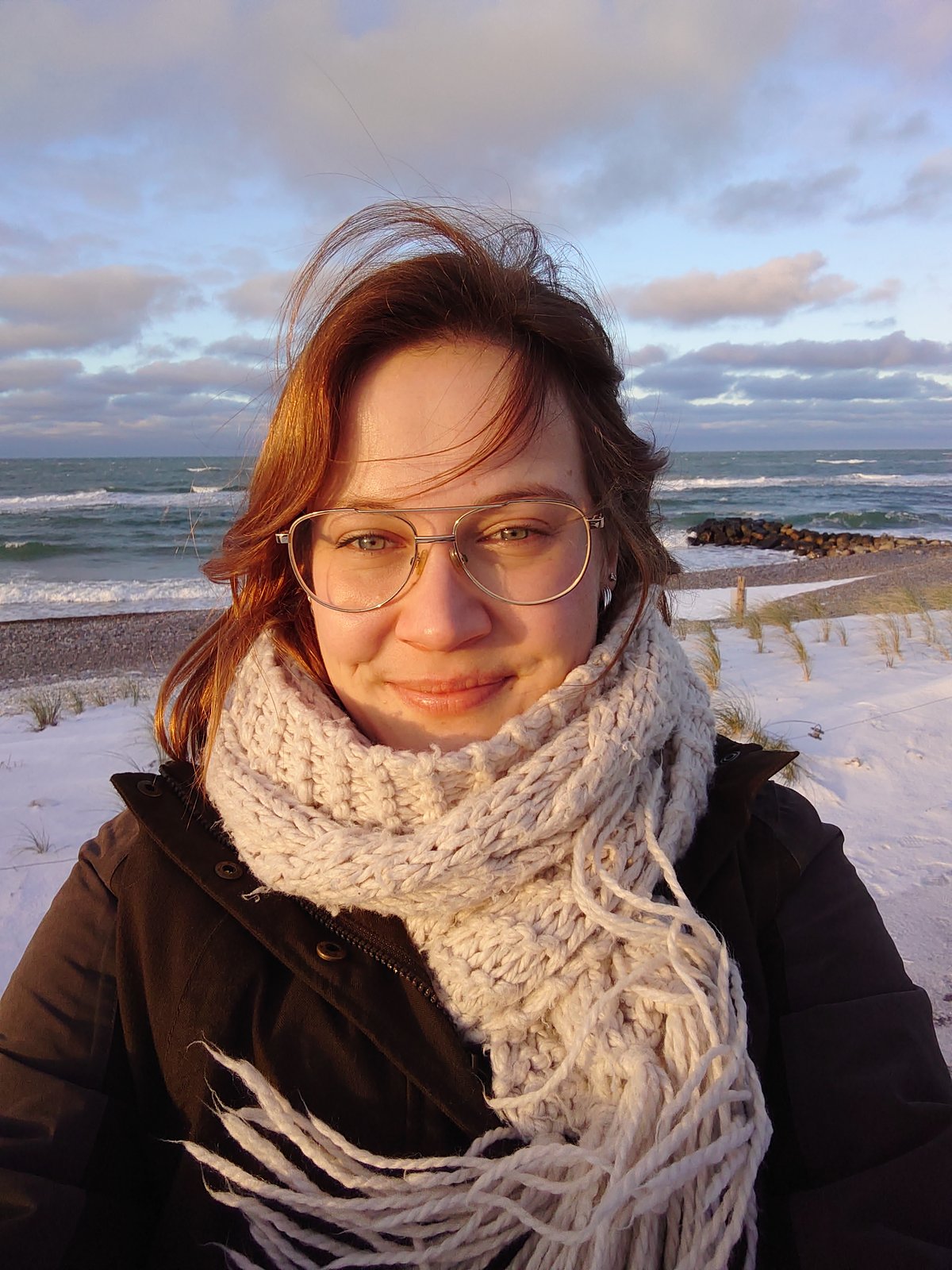
We are pleased to announce that the new topical Rio Journal collection for ALMaSS is now kicked off with an editorial by the founder and main developer of ALMaSS, Prof. Chris Topping, introducing The Animal Landscape and Man Simulation System.
Find the paper here.
We look forward to bring together all outputs related to ALMaSS in this new collection!

Christopher J. Topping
Department of Ecoscience,
Biodiversity and Conservation,
Aarhus University, DK
Yesterday we had the pleasure of having our Organic+ project meeting and workshop hosted by our project partner Stenalt Landbrug.
At the project meeting, current results and developments were presented by partners involved as well as fruitful discussions about current and future plans of dissemination and demonstration of the project.
In the afternoon, we had a workshop including partners and involved farmers where further discussions and knowledge exchange on biodiversity friendly farming actions, and dissemination and demonstration took place.
We finished the day with an inspirational field walk where we observed some of the biodiversity friendly farming actions taking place at Stenalt.
The photo (by Jordan Chetcuti) shows a lentil/oat field margin with a flower strip placed next to a grassy hedge - an area full of life with even more to come as the flower strip grows.
A great thank you to all Organic+ project participants for a productive and interesting day!
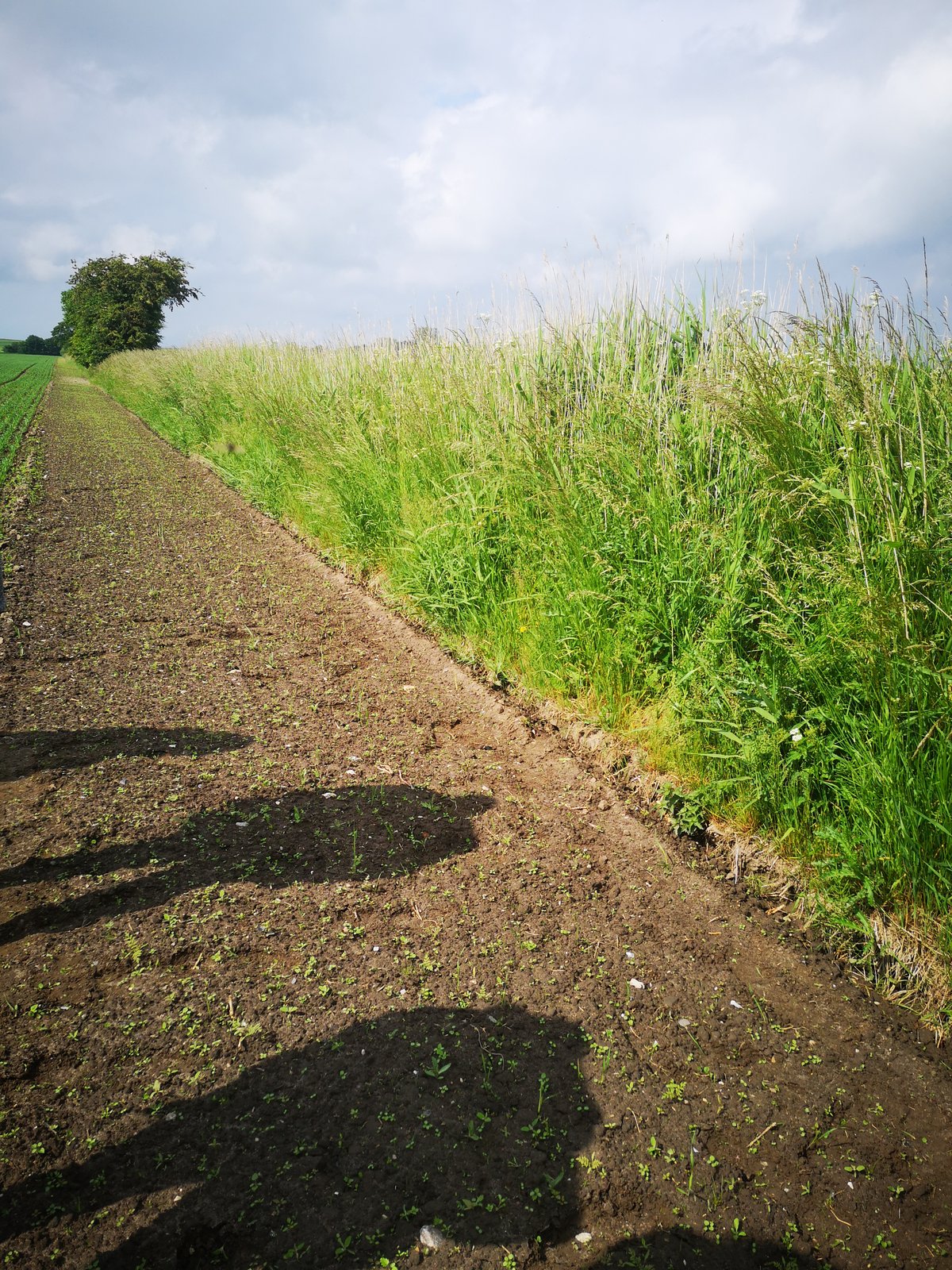
Say hello to our newest addition to the SESS Danish core team, Peet Thomsen, who has joined us as a research assistant.
Peet has a MSc in Biology from Aarhus University, and will assist the SESS team in two main areas; supporting coordination and desk research on pollinators, pesticides and risk assessment, as well as species modelling by searching and providing information on species' biological parameters needed to model species' behaviour and specifications.
Peet joined our team this week, and he has jumped straight into reading up on projects, analysing data and acting as moderator at a project meeting. Well done!
Welcome to the SESS team Peet, we are happy to have you!
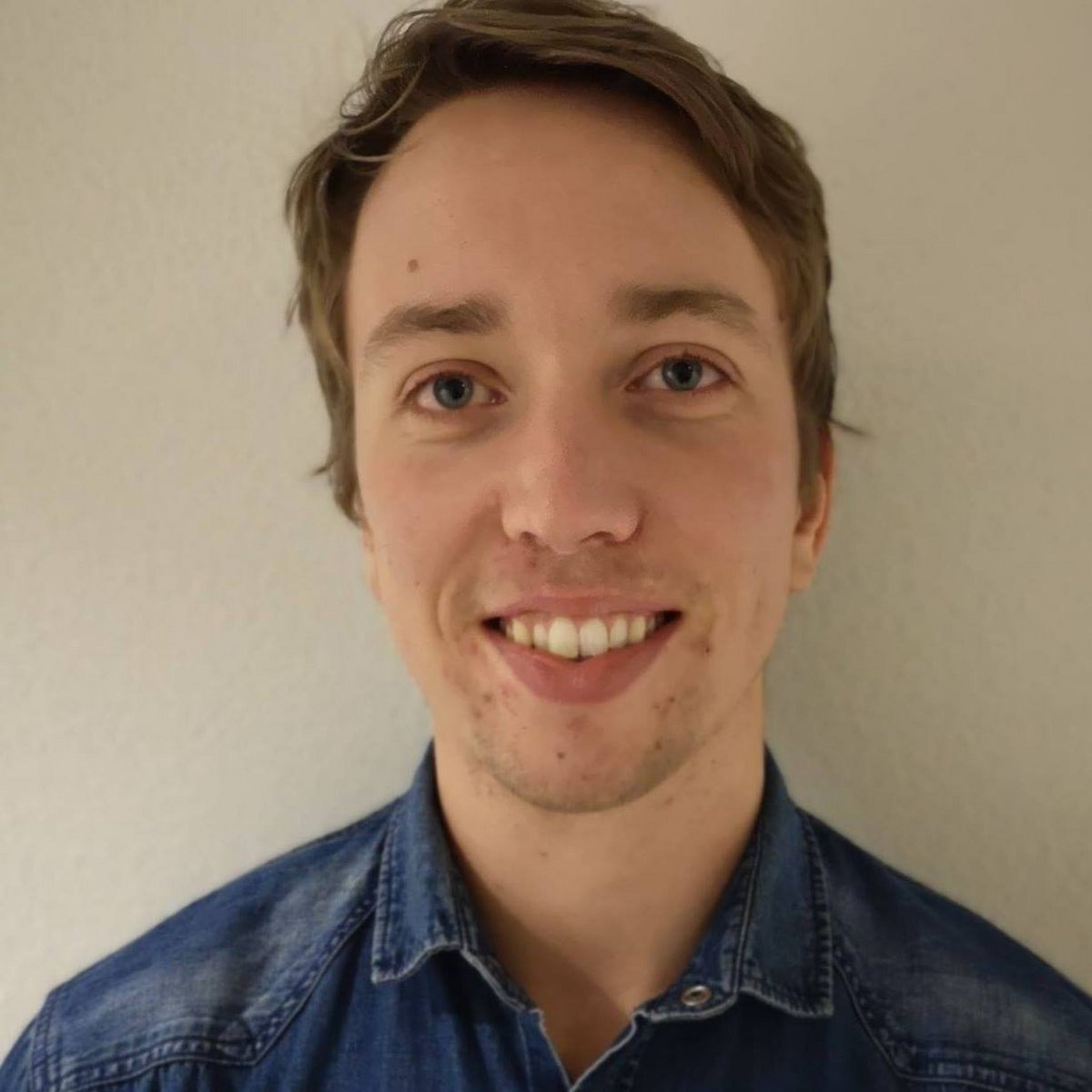
A newsletter about the Organic+ project is now available at the ICROFS website. Here you can read more about the background to Organic+ and the project objectives.
It is time for targeted biodiversity-friendly actions. In Organic+, we investigate the environment-friendly agricultural practices and actions best suitable for organic farming at local and regional levels by ALMaSS computer simulations, multi-actor engagement and field observations.
The photo (by Yoko L. Dupont) shows an example of flower strips - one of several possible biodiversity-friendly actions.
Read the newsletter here (Danish).
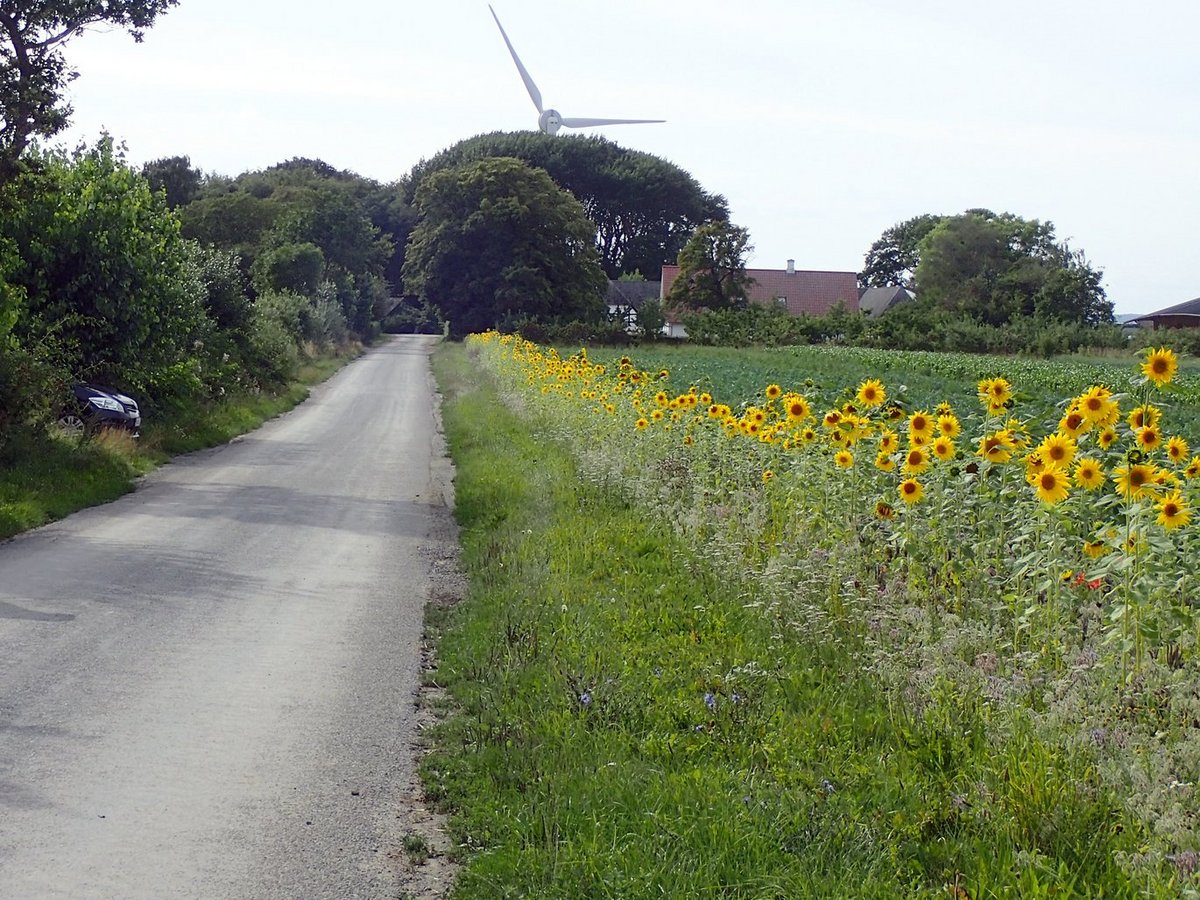
Our bee expert of the SESS team, Yoko L. Dupont, is publishing a booklet called "Bier" (eng: Bees). The booklet is a part of a series with the Aarhus University Press called "Tænkepauser" (eng: Reflections). Tænkepauser is a booklet series where top scholars from Aarhus University share the essence of their knowledge about a specific topic. In 60 reader-friendly pages Yoko explains thoughts, discoveries and insights to bees, which she has studied for years. Find more about the booklet the Department of Ecoscience website.
The booklet will be published the 2nd of May in Danish, and can be purchased here.
In connection with the booklet release, two Tænkepauser live talkshows the 2nd and 3rd of May will be held at Nørrebro Theater (poster shown) and Musikhuset Esbjerg, respectively, where Yoko will present her work. You can find more about the talkshows here. Yoko will also present the booklet at libraries around the country. The first occasion is the 5th of May at a "Bog torsdage" (eng: Book Thursdays) event where books of the month will be presented at Det Kgl. Biobliotek, Aarhus (poster shown).

Yoko L. Dupont
Department of Ecoscience,
Biodiversity and Conservation,
Aarhus University, DK
The SESS team is excited to announce that Dr. Jordan Chetcuti has joined the Danish core team as a researcher.
Jordan is a computational ecologist from Trinity College Dublin, with an interest in using individual-based models (IBMs) to gain insights into ecological and social systems. As part of the PoshBee project, he is working on creating a framework for Bombus sp. modelling within the ALMaSS framework. In addition, Jordan is working on the creation of spatial input data for Ireland to go into ALMaSS. Thus, Jordan is already well-known to the SESS team with his contributions to the ALMaSS through PoshBee.
Jordan has used IBMs while at the UK Centre for Ecology & Hydrology and the University of Leeds, to explore habitat fragmentation on biodiversity. This research included species habitat preference and coexistence conducting spatial analysis and developing a weighted version of a metric of habitat association, the phi coefficient of association, and testing this looking at carabid habitat association.
Jordan worked on remote sensing using LiDAR and hyperspectral imagery to explore the māmane (Sophora chrysophylla)/naio (Myoporum sandwicense) cloud forest of the Big Island of Hawai‘i, to explore the reasons for the decline of the endangered Hawaiian bird species Palila (Loxioides bailleui) while completing a Masters and lecturing at the University of Hawai‘i at Mānoa.
During his time at Forest Research, the research agency of the British Forestry Commission, as a spatial landscape ecologist, Jordan worked with local councils and forest districts across Scotland and Northern England integrating habitat and people networks into planning. He created decision support tools taking into consideration reaching targets for biodiversity, people and hydrological planning. Jordan also collaborated with national parks, Scottish Natural Heritage and Royal Society for the Protection of Birds (RSPB), including work looking at the impacts of forestry on heathland birds.
With Jordan's experience, he will be a great addition to the SESS team - Welcome Jordan!
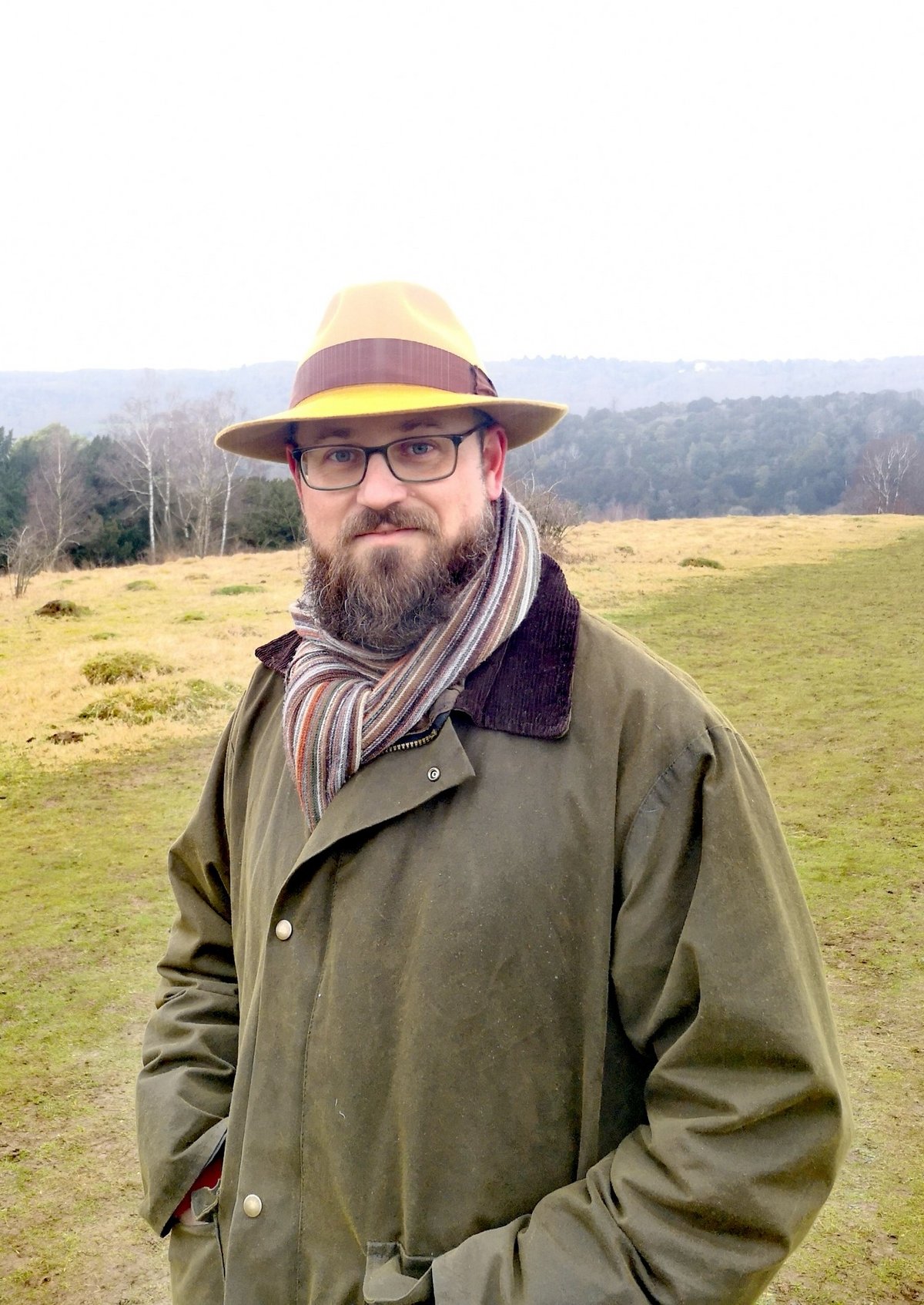
The SESS team is delighted to announce that the ApisRAM agent-based honey bee colony model is published in the EFSA Supporting Publications. The scientific report presents the full model view, thanks to years of work by SESS lead developers Xiaodong Duan and Chris Topping.
The ApisRAM model is an agent-based colony model for honey bees in which each bee is modelled as an individual agent. The behaviour of the colony emerges from the decisions and actions taken by individuals in the colony and the interactions between agents. The bees interact with, and react to, both other bees and the resources in the colony, the hive physical and chemical properties, and the environment outside the colony. A key feature of ApisRAM is the approach to representing bee health. This is a ‘vitality’ model which is used to integrate multiple stressors (unfavourable temperature, food shortage, infectious agents and pesticides) for each individual bee. The vitality of each model bee interacts with all the four stressors. The environment in which the colony is modelled is implemented as a dynamic landscape simulation within ALMaSS (the Animal Landscape and Man Simulation System). The ALMaSS landscape model is a spatially and temporally dynamic model which combines land use, detailed farm practices, weather, crop growth, semi-natural habitats, and flower resource models. With the combination of the colony and landscape models, the ApisRAM model provides a framework for in silico experiments, e.g., pesticides applications, designed to explore the effects of combined stressors on honey bee colonies under a variety of environmental and human (e.g. beekeeping management practices) factors.
Find the report here.

Xiaodong Duan
Department of Ecoscience,
Biodiversity and Conservation,
Aarhus University, DK

Christopher J. Topping
Department of Ecoscience,
Biodiversity and Conservation,
Aarhus University, DK
The SESS team is happy to share news of the launch of a new journal, the Food and Ecological Systems Modelling Journal (FESMJ), by Pensoft Publishers. This journal has a focus on scientific modelling from the modeller's perspective, and we hope it will become a first port of call for papers describing models, their construction and use broadly in ecology. This journal will allow modellers to present their models and methods and gain credit for the work needed to craft these tools, often a huge task.
SESS Center Leader Prof. Christopher Topping joins the FESMJ as co-Editor-in-Chief; Chris and the SESS team look forward to add papers to this journal which will enable SESS and others to share the backbone of our models with everyone who desires to apply and build on our work.
Read more about the FESMJ here.

Christopher J. Topping
Department of Ecoscience,
Biodiversity and Conservation,
Aarhus University, DK
More than 75% of the world’s leading crops are dependent on animals for pollination, and hence fruit and seed set. In the newly published database “CropPol”, more than 100 scientists have contributed data on pollinators and pollination of a total of 48 commercial crop across 32 countries and 30 years.
Read more about the news here (in Danish). The data paper is available here.
The data paper is accompanied by a contribution to the Bulletin of the Ecological Society of America found here.
From Denmark, data were included on visitation rates of bumblebees and honey bees in commercial red clover fields, in addition to seed yield. Data were collected in 2008-2009, in this study.

Yoko L. Dupont
Department of Ecoscience,
Biodiversity and Conservation,
Aarhus University, DK
Project participants: Yoko L. Dupont, Xiaodong Duan, Christopher J. Topping, James H. Williams, Andrey Chuhutin, Geoffrey B. Groom, Luna K. Marcussen, Rasmus D. Nielsen, Bent Rasmussen, Maja E. Petersen, Sybille Kyed, Dorte M. Jensen, Svend Brodersen & Anne B. Olsen
Organic+ will use computer simulations and field monitoring to investigate landscape level changes in biodiversity following implementation of sustainable biodiversity enhancing measures in five case areas differing in landscape context and managed by three organic enterprises. Communities of practice (CoPs) will be established in case areas, engaging the three organic enterprises along with other collaborators, e.g. from farmers to retailers. CoPs will support the co-development of biodiversity measures, gaining agreement on goals, acceptance and the widespread uptake of effective solutions. Furthermore, Organic+ develops and tests a decision support tool for optimizing biodiversity gains by enabling identification and implementation of optimal sustainable biodiversity measures, that result in landscape mosaics supporting valued natural systems and nature, tailored for landscape contexts. Project outputs will contribute and guide OD strategic developments helping it attain its ambitious 30-30-30 goal, further supporting the development of sustainable food consumption and providing sustainable livelihoods for organic farmers.

Yoko L. Dupont
Department of Ecoscience,
Biodiversity and Conservation,
Aarhus University, DK

Xiaodong Duan
Department of Ecoscience,
Biodiversity and Conservation,
Aarhus University, DK

Christopher J. Topping
Department of Ecoscience,
Biodiversity and Conservation,
Aarhus University, DK

James H. Williams
Department of Ecoscience,
Biodiversity and Conservation,
Aarhus University, DK

Andrey Chuhutin
Department of Ecoscience,
Biodiversity and Conservation,
Aarhus University, DK

Geoffrey B. Groom
Department of Ecoscience,
Biodiversity and Conservation,
Aarhus University, DK

Luna K. Marcussen
Department of Ecoscience,
Biodiversity and Conservation,
Aarhus University, DK
This paper develops the modelling framework to predict the structure of plant-pollinator interaction networks and associated ecosystem functions, based on community assembly processes (dispersal, trait-based ecological filtering and neutral processes). Find the article here.

Yoko L. Dupont
Department of Ecoscience,
Biodiversity and Conservation,
Aarhus University, DK
The letter https://www.nature.com/articles/s41559-021-01574-1 focuses on the need for better use of pesticide application data in the EU and suggests the adoption of a model similar to that used in California.

Christopher J. Topping
Department of Ecoscience,
Biodiversity and Conservation,
Aarhus University, DK
The course has now come to an end. We are delighted to say that our online ALMaSS course the 18-22nd October 2021 went well. We were met by excited and engaged participants that learned about the background, use, and possibilities of ALMaSS.
We look forward to keep in touch with the participants, and to the future collaboration and events together with the international ALMaSS users.
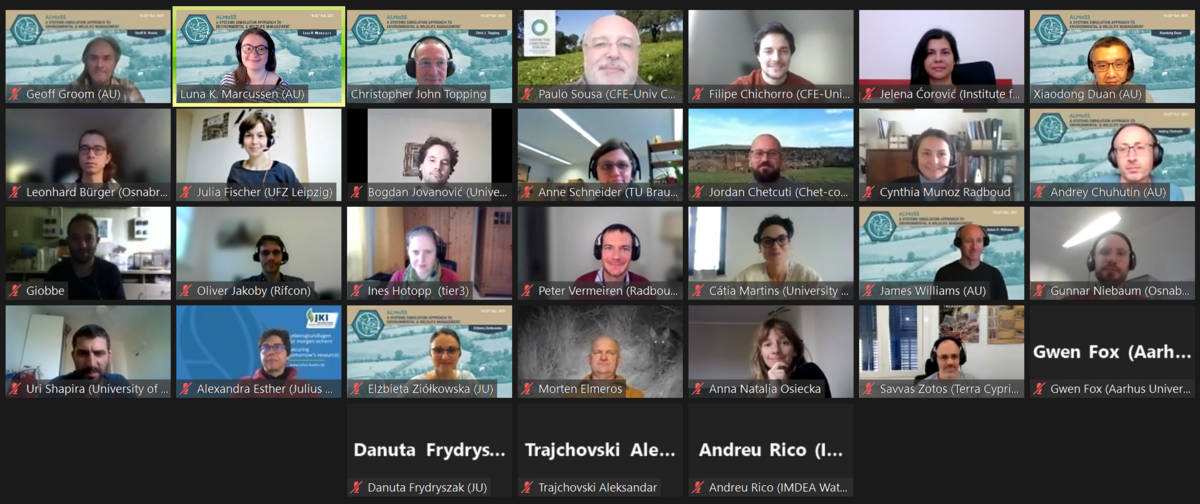
The course has now reached its maximum number of participants and the deadline for registration.
The SESS team is looking forward to share the world of ALMaSS with the participants!


Yoko L. Dupont
Department of Ecoscience,
Biodiversity and Conservation,
Aarhus University, DK

Christopher J. Topping
Department of Ecoscience,
Biodiversity and Conservation,
Aarhus University, DK

Xiaodong Duan
Department of Ecoscience,
Biodiversity and Conservation,
Aarhus University, DK

James H. Williams
Department of Ecoscience,
Biodiversity and Conservation,
Aarhus University, DK

Luna K. Marcussen
Department of Ecoscience,
Biodiversity and Conservation,
Aarhus University, DK
EFSA research project report on field data collection for honey bee model evaluation is now published.
The project was lead by SESS member Senior Researcher Yoko L. Dupont, and was designed for development and calibration of the honey bee colony simulation model, ApisRAM.
The project data is also included in The EU Bee Partnership's (EUBP) new online data platform which will support the effort to protect bee and pollinator health.
Read the final EFSA report here, and read more about the new online EUBP data platform here.

Yoko L. Dupont
Department of Ecoscience,
Biodiversity and Conservation,
Aarhus University, DK

Paulo Sousa
Department of Life Sciences,
The Centre for Functional Ecology,
Coimbra University, PT

Nuno Capela
Department of Life Sciences,
The Centre for Functional Ecology,
Coimbra University, PT

Joana Alves
Department of Life Sciences,
The Centre for Functional Ecology,
Coimbra University, PT

Geoffrey B. Groom
Department of Ecoscience,
Biodiversity and Conservation,
Aarhus University, DK

António Silva
Department of Life Sciences,
The Centre for Functional Ecology,
Coimbra University, PT
The B-GOOD CM5 will provide an interactive online conference which will provide floor for the demonstration of the ongoing research and showcasing progress, as well as promote cooperation between B-GOOD participants. The SESS team are looking forward to hosting the event!
Read more about the B-GOOD project.
The recently published 2020 edition of the Danish Centre for Environment and Energy annual report (DCE - Nationalt Center for Miljø og Energi) holds an article about SESS centre. It describes the SESS centre work approach, aim, current use and the potential future impacts.
Read the article on page 9.
Project participants: Yoko L. Dupont, Xiaodong Duan, Christopher J. Topping, James H. Williams, Per Kryger, Elżbieta Ziółkowska, Agnieszka J. Bednarska
The MUSBERA project has been funded by the Pesticide and Biocide Research Program of the Danish EPA.
The Pesticide and Biocide Research Program aims to contribute to the minimisation of the use of pesticides and the reduction of sideeffects on human health or the environment from the applications of pesticides.
The MUSBERA project contributes to the development of environmental risk assessment regulatory scenarios for bees using the MUST-B approach (“A systems-based approach to the environmental risk assessment of MUltiple STressors in honey Bees”, European Food Safety Authority (EFSA)), and evaluating the performance of ALMaSS models; ApisRAM and Osmia model in Denmark.

Yoko L. Dupont
Department of Ecoscience,
Biodiversity and Conservation,
Aarhus University, DK

Xiaodong Duan
Department of Ecoscience,
Biodiversity and Conservation,
Aarhus University, DK

Christopher J. Topping
Department of Ecoscience,
Biodiversity and Conservation,
Aarhus University, DK

James H. Williams
Department of Ecoscience,
Biodiversity and Conservation,
Aarhus University, DK

Luna K. Marcussen
Department of Ecoscience,
Biodiversity and Conservation,
Aarhus University, DK

Elżbieta Ziółkowska
Institute of Environmental Sciences,
Jagelloinan University, PL

Agnieszka J. Bednarska
Institute of Nature Conservation,
Polish Academy of Science, PL
Claus Rasmussen, Yoko L. Dupont, Henning B. Madsen, Petr Bogusch, Dave Goulson, Lina Herbertsson, Kate Pereira Maia, Anders Nielsen, Jens M. Olesen, Simon G. Potts, Stuart P. M. Roberts, Markus A. K. Sydenham, Per Kryger
A recurrent concern in nature conservation is the potential competition for forage plants between wild bees and managed honey bees. Specifically, that the highly sophisticated system of recruitment and large perennial colonies of honey bees quickly exhaust forage resources leading to the local extirpation of wild bees. However, different species of bees show different preferences for forage plants. We here summarize known forage plants for honey bees and wild bee species at national scale in Denmark. Our focus is on floral resources shared by honey bees and wild bees, with an emphasis on both threatened wild bee species and foraging specialist species. Across all 292 known bee species from Denmark, a total of 410 plant genera were recorded as forage plants. These included 294 plant genera visited by honey bees and 292 plant genera visited by different species of wild bees. Honey bees and wild bees share 176 plant genera in Denmark. Comparing the pairwise niche overlap for individual bee species, no significant relationship was found between their overlap and forage specialization or conservation status. Network analysis of the bee-plant interactions placed honey bees aside from most other bee species, specifically the module containing the honey bee had fewer links to any other modules, while the remaining modules were more highly inter-connected. Despite the lack of predictive relationship from the pairwise niche overlap, data for individual species could be summarized. Consequently, we have identified a set of operational parameters that, based on a high foraging overlap (>70%) and unfavorable conservation status (Vulnerable+Endangered+Critically Endangered), can guide both conservation actions and land management decisions in proximity to known or suspected populations of these species.
Find the article here: https://doi.org/10.1371/journal.pone.0250056

Yoko L. Dupont
Department of Ecoscience,
Biodiversity and Conservation,
Aarhus University, DK
Christopher John Topping, Mark Brown, Jordan Chetcuti, Joachim R. de Miranda, Francesco Nazzi, Peter Neumann, Robert J. Paxton, Maj Rundlöf, Jane C. Stout

Christopher J. Topping
Department of Ecoscience,
Biodiversity and Conservation,
Aarhus University, DK

Jordan Chetcuti
Department of Botany,
School of Natural Sciences,
Trinity College Dublin, IR

Jane C. Stout
Department of Botany,
School of Natural Sciences,
Trinity College Dublin, IR
Elżbieta Ziółkowska, Christopher J. Topping, Agnieszka J. Bednarska, Ryszard Laskowski
Intensification of agricultural practices is one of the most important drivers of the dramatic decline of arthropod species. We do not know, however, the relative contribution to decline of different anthropogenic stressors that are part of this process. We used high-resolution dynamic landscape models and advanced spatially-explicit population modelling to estimate the relative importance of insecticide use and landscape structure for population dynamics of a widespread carabid beetle Bembidion lampros. The effects of in-crop mitigation measures through the application of insecticides with reduced lethality, and off-crop mitigation measures by increasing abundance of grassy field margins, were evaluated for the beetle along the gradient of landscape heterogeneity. Reducing the insecticide-driven lethality (from 90 to 10%) had larger positive impacts on beetle density and occupancy than increasing the abundance of field margins in a landscape. The effects of increasing field margins depended on their width and overall abundance in the landscape, but only field margins 4 m wide, applied to at least 40% of fields, resulted in an increase in beetle population density comparable to the scenario with the smallest reduction of insecticide-driven lethality we considered. Our findings suggest the importance of field margins rather as a supporting not stand-alone mitigation measure, as they generally improved effects of reduction of insecticide-driven lethality. Therefore, adding sufficiently broad off-field habitats should help to maintain viable beetle populations in agricultural landscapes even with moderate use of insecticides. In general, the less persistent the insecticides are in the environment, the larger positive impacts of applied mitigation measures on beetle populations were found. We also showed that the effectiveness of applied mitigation measures strongly depends on landscape and farmland heterogeneity. Thus, to achieve the same management or mitigation target in different landscapes might require different strategies.
Find the article here: https://doi.org/10.1016/j.scitotenv.2021.145746

Elżbieta Ziółkowska
Institute of Environmental Sciences,
Jagelloinan University, PL

Christopher J. Topping
Department of Ecoscience,
Biodiversity and Conservation,
Aarhus University, DK

Agnieszka J. Bednarska
Institute of Nature Conservation,
Polish Academy of Science, PL

Ryszard Laskowski
Institute of Environmental Sciences,
Jagelloinan University, PL
The centre was launched using an open zoom meeting.
Below is a link to a YouTube video of the launch meeting.
Thank you to all who attended and best wishes for all our future collaborations.
/Chris